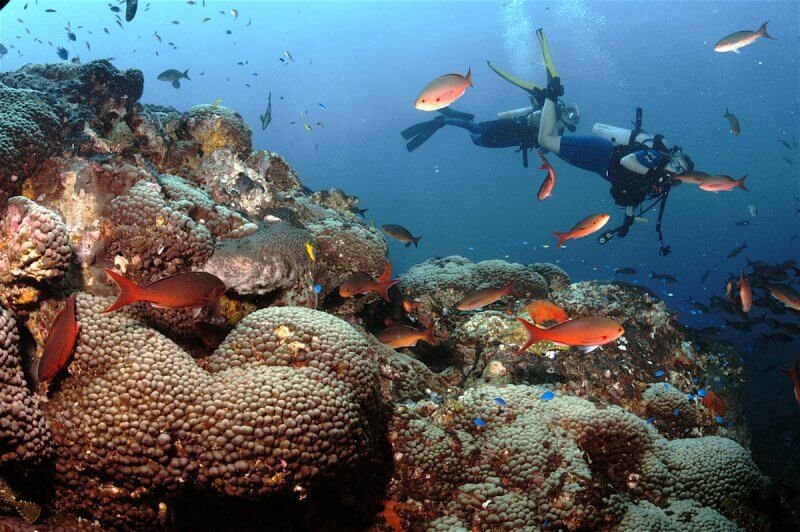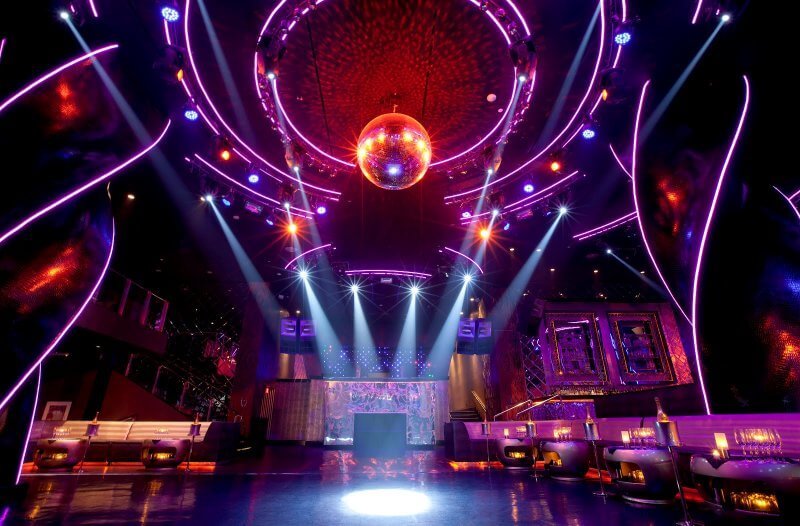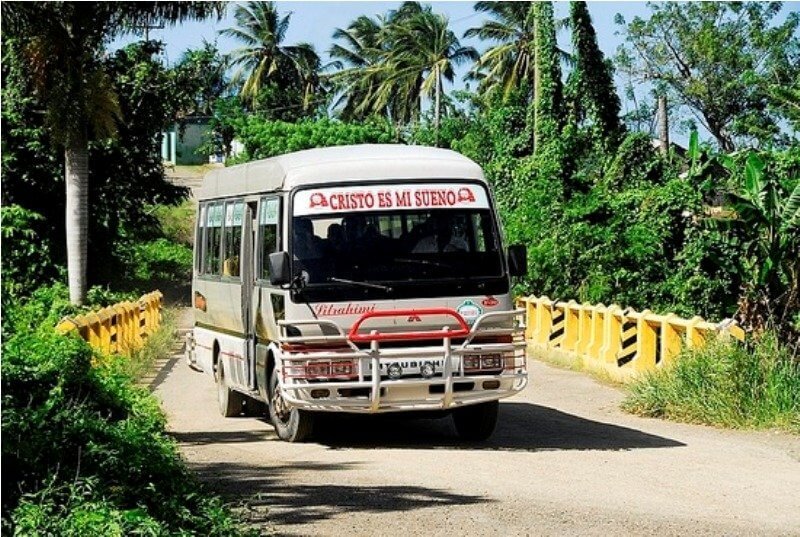If there are any bounty beaches in the world, it’s certainly in Punta Cana (Dominican Republic). There are still preserved beaches, not dusted with flour and not painted with bright colors in Photoshop. The real scenery of the resort of Punta Cana practically does not differ from the photos in glossy magazines and advertising booklets. It is not surprising that the coastline of a small town is completely built up with hotels and bungalows, and as a bonus, tourists can visit several national parks, mangrove forests, and admire exotic plants, birds, and animals. The main contingent of travelers is families and fans of a calm, unhurried holiday.
General information about the city of Punta Cana
Punta Cana is located in the eastern part of the island of Haiti in the province of La Altagracia. The distance to the capital of the republic is 150 km, the area is 420 thousand m2. The population is 100 thousand people. Despite the fact that the resort is included in the list of prestigious and elite, most of the locals are poor.
Interesting fact! Every year, the growth of tourists in Punta Cana in the Dominican Republic is 6%.
First of all, vacationers are attracted to the beaches, which are about 32 km long. The coastline is covered with coral sand, and the water has an unusual emerald hue. It is noteworthy that in this part of the Dominican Republic there are almost no strong winds and storms. The rich underwater world fascinates many lovers of snorkeling and diving.
The name of the city means “place where palm trees meet” — and this fully corresponds to reality. Punta Cana is almost completely covered with coconut palms and mango thickets.

For the first time about the city in the Dominican Republic, they learned at the end of the last century, when hotels and bungalows decorated in a tropical style began to appear on the coast. Such buildings attracted the attention of European tourists, since recreation in such conditions was considered exotic at that time. The distance between the sea and the hotel did not exceed 80 m.
Interesting fact! The official language in Punta Cana is Spanish, and 95% of the locals are Roman Catholics.
There are large shopping centers in the city that sell clothing, costume jewelry, shoes, and accessories. The price level corresponds to the European ones. To save money on shopping, you need to go to supermarkets located at a distance from the city, for example, in Bavaro there are many souvenir shops, shops,and entertainment centers. For gifts and clothing with national symbols, it is preferable to go to the market located next to El Cortesito beach. The assortment includes amber jewelry, a large selection of Lima dolls. Coffee, as well as branded tincture of mamahuana, is recommended to buy in supermarkets.
Roaming in the Dominican Republic (Punta Cana is no exception) is very expensive, so it is better to use the tariff of local mobile operators.
A tip! Orange has the best coverage, but Claro has the lowest prices for services.
Mobile phone stores offer tariff plans with the most favorable conditions. For purchase and registration, you need to have a passport with you and the required amount to top up your account.
Wi-Fi is easy enough to catch in any crowded place, in all cafes, so connecting to the Internet will not be a problem. In hotels, Wi-Fi is often paid, but the service is free at the reception desk.
Beaches
The coastline of Punta Cana, suitable for beach holidays, stretches from north to south, from the Atlantic to the Caribbean Sea. The total length of the beaches is 32 km, you can quickly explore them and choose the one that you like the most. As experienced tourists note, it is difficult to stay on any one beach, because you can fall in love with each one at first sight.
Important! The beaches of Punta Cana are public and open to everyone during the day, but they are closed at night.
From a tourist point of view, Bavaro beach is considered the best, there is a picturesque coral reef nearby in the sea, and everything necessary for a comfortable relaxation is provided on the shore. In addition, it is believed that this place has the calmest and warmest sea. There are shops, pharmacies, banks, and supermarkets here. But Bavaro is far from the only beach in Punta Cana in the Dominican Republic.
A rating of the best beaches in the Dominican Republic with a description and photos can be found here.
Macau

If you’re a surfer, you’ve probably heard of this 5 km long beach. It is wild, there are no hotels, but it is very beautiful. Most often, tourists come here for one day with a tour group.
A tip! Choose a weekday for your trip, as there are a lot of locals coming to Macau on weekends. The best place where there are no waves is near the rocks, in the eastern part of the beach.
If you want to eat in a cafe on the beach, find out the price of seafood in advance and be sure to check the weight of the fish.
For a more detailed description of the beach with photos, see this page.
Arena Gorda

Located near Bavaro and considered one of the most beautiful in Punta Cana. Its name means “greasy sand” in Spanish. If you prefer big waves, choose a place in the western part, but as you move east, the sea becomes calmer.
If you see a red flag on the shore that prohibits swimming, you can spend time in the pool or take time for other entertainment.
Arena Gorda has the widest coastal strip, the sand here is white, fine and soft. The beach was awarded the international Blue Flag Award for its constant cleanliness. A coral reef runs along the coast, perhaps it is this reef that gives the water an amazing turquoise color.
Bavaro
The beach is characterized by white sand and calm water, but algae periodically appear on the surface, but they are immediately removed. The length of the coastline is 2 km, an amazing feature of the sand on Bavaro – it does not heat up even under the rays of the scorching sun.

Bavaro is a popular destination in the Dominican Republic, but like other resorts in the Dominican Republic, it is kept clean, so the beach has been awarded the “Blue Flag” award.
Useful to know! Bavaro is the safest place in the Dominican Republic, as it is protected from wind and storms by a reef, which, by the way, is popular among divers and snorkelers.
Today, Bavaro is not a fishing village, but a rapidly developing city in the Dominican Republic, where there are medical centers, pharmacies, restaurants, shopping centers, banks and other objects of tourist and social significance.
Juanillo
Located in the exclusive area of Cap Caen, there are resort hotels, restaurants, a marina for boats and yachts. Directly on the beach, there is a restaurant marked with the “Excellence” certificate from Trip Advisor.

Useful to know! Juanillo is one of the most beautiful beaches in the world.
By the way, if you are planning a wedding ceremony and want it to be remembered for many years to come, choose Juanillo Beach. This is a favorite place for newlyweds. The beach is 3 km long, covered with snow-white sand, and is washed by clear turquoise water. For tourists, there are sun beds, umbrellas, pillows and even comfortable sofas. Children can play on trampolines or go on slides. If beach relaxation seems boring, take a boat, kayak or catamaran ride.
Important! Juanillo is a closed area, entrance is only possible with passes, as well as for those who have booked a hotel room, or are planning a photo session.
Things to do in Punta Cana
Of course, a resort town in the Dominican Republic is not just about beach relaxation. We will tell you where to go on your own in Punta Cana, and what to do in your free time from the beach.
Diving and snorkeling

The first thing that comes to mind when asking what to do in Punta Cana is diving and snorkeling. For diving in the Caribbean Sea, the resort has everything-warm water, a diverse underwater world, picturesque grottoes, sunken ships. Equipment is offered by numerous diving centers that work along the entire coastline. Both experienced divers and beginners are welcome here.
Along the coast there are many interesting places where you can dive. Some are located closer to the shore and are more suitable for beginners, while others require some training and skills. Visibility in the water reaches 30 m.
The most interesting places to dive are in the Caribbean Sea, but the Atlantic Ocean in this sense is poorer and less interesting.
Important! Prices for dives vary and depend on your personal training and the Center that provides the service. On average, you will have to pay about $ 105 for two dives.

If you have fully explored the Punta Cana region, take a guided tour to the nearby islands. The most interesting one from the point of view of tourism is Catalinita. People come here for diving, water safari and snorkeling.
Tourists note that Punta Cana is ideal for novice snorkelers and divers, as you can admire the sea floor at any depth.
Interesting fact! The water temperature near Pnta-Kana remains at the same level throughout the year+24-+26 degrees.
Since the Atlantic Ocean and the Caribbean Sea meet near the city of the Dominican Republic, strong winds often blow here – and these are ideal conditions for windsurfing, as well as sailing.
Fishing
Despite the fact that the Dominican Republic is an island state, there is a culture of fish consumption, there are no large fishing fleets and processing enterprises on the territory of the country. Fish and seafood are purchased in neighboring countries. Fishing is done only by poor locals and tourists in the hope of catching an exotic specimen heavier. By the way, fishing is one of the ways Dominicans earn money — they offer paid excursions in the Dominican Republic to Punta Cana, during which you can try your luck directly from the boat.

The best way to catch fish in the Dominican Republic is from a boat, called trolling. By the way, for a good catch and serious fishing, it is better to choose the Atlantic Ocean, since the Caribbean Sea is more of a tourist destination. If you want to catch a deep-sea moray eel or stingray, it is better to choose a sea donkey.
Important! For professional fishing alone, you will need a special license-Licencia de pesca. You can buy it in any port of the Dominican Republic.
In Punta Cana, tourists are offered two types of fishing — for tourists and professional. In the first case, you will find rather pleasant and fun entertainment, and in the second-a trip to fishing places with a full set of gear. You can catch white and blue marlin, wahoo, dorado, yellowfin tuna and sailfish off the coast of Punta Cana. The weight of fish varies from 10 kg to 200 kg.
Useful to know! The price of fishing is announced either for a boat-from $ 450, or per person-from $ 80.

Tips for fishing tourists:
- fishing is better in the Atlantic Ocean;
- the boat must be rented for 7-10 hours;
- the best time to catch huge marlin is August and September;
- take motion sickness pills with you.
Night clubs
Punta Cana is a popular tourist destination, so it’s no surprise that the nightlife here is booming. Tourists can have a great time without leaving the hotel, as almost everyone has a disco and bar, evening shows and performances are held. If you get bored at the hotel, outside the hotel, in the city, there are probably places to go in the Dominican Republic in Punta Cana.

Night clubs are located on the territory of shopping and entertainment complexes, and popular artists in Latin America often come here. And in Punta Cana there is a unique nightclub, which has no analogues in the whole world-it is located right in the caves, which are connected by corridors.
Accommodation
The length of the resort is 60 km, it is divided into nine districts. There are not many hotels directly in Punta Cana, but it is a convenient transport hub for getting around, buses stop here, including intercity ones, and the airport is located nearby.
Cap Cana is a fashionable area, so the service and prices are quite high. If you are looking for peace, tranquility and privacy, the beaches of El Cortesito and Cabeza de Toro are your choice. The first one has a decent selection of shops and markets, and the second one has a “Blue Flag” award.

In Bavaro there is almost all the tourist infrastructure, night clubs work, but in Macau there are no beach amenities, but the sea and shore are the safest in Punta Cana.
Hotels and bungalows of the resort in the Dominican Republic are two-and three-story houses built among lush vegetation. Almost all of them work on the “all inclusive” system.
- Cheap guesthouses and hostels offer accommodation at prices starting from$ 16 per bed and starting from$ 26 for a double room with breakfast.
- If you are attracted to a “wild” holiday, you can rent a tent among palm trees, the cost of such housing starts from$12.
- There are not so many medium-sized hotels in the resort, most of them are 4-and 5-star hotels. For a double room in a 3-star hotel, you will have to pay from$ 20, and for a double room in a luxury hotel-from$40.
Punta Cana Best 5-Star All-Inclusive Hotels
Food

The national cuisine of the Dominican Republic is, first of all, an original combination of traditional products, for example, taino – pancakes stuffed with meat, order in the cafe san cochon – a rich soup made from different types of meat and vegetables. And do not forget about coconut nuts, numerous fruits. Bananas are prepared in an original way in the Dominican Republic, fried and served with bacon and cheese.
Large restaurants must have restaurants, so you don’t have to go out to the city. However, on the streets of Punta Cana there are many establishments where European and Dominican cuisine is prepared.

- A check in a cafe with an average price policy is from$ 13 to$21.
- Small family establishments built on the coast are very popular. These are inexpensive places, lunch here costs from$ 10, but a snack in a chain of fast food restaurants will cost$7.
- In restaurants, the cost of lunch for two varies from$ 34 to $ 66.
How to get around the resort
Public transport in Punta Cana is in poor condition, namely buses. The technical condition raises concerns, and the travel schedule is unstable. Get ready to endure the heat and annoying local population. The ticket price is$1.
Important! Public transport stops in Punta Cana are not marked, but you will have to make an effort to find at least one.
Buses can be stopped right along the way, just raise your hand.

Since the problems with public transport in Punta Cana are obvious, most tourists prefer to use taxi services. The trip will cost 10 times more than the cost of a bus ticket, but it is safe and convenient. In Punta Cana, there is an official service that offers taxis at fixed prices. On average, a trip around the city will cost $ 12, and from one resort area to another- $ 47.
Useful to know! Tourist taxis run in Punta Cana, they are more comfortable and have higher prices.
If you are planning only beach relaxation, it doesn’t make sense to rent a car. Taxi service is very popular, it can be taken from the airport or travel to waterfalls or other attractions.
Be prepared for the fact that the roads in Punta Cana are not in the best condition – you will have to drive through pits, face the aggressive driving style of local drivers. It is noteworthy that there are practically no traffic jams on the roads, since there are much more motorcycles and mopeds than cars.
Important! You can park anywhere in the city if there is no prohibition sign. As a rule, the price of a taxi does not include insurance, it is necessary to pay an additional fee from$ 11 to$15.
Climate, weather conditions
Throughout the year, the weather in Punta Cana is hot, without sharp temperature changes. The average annual temperature is +30 degrees. The hottest period is from May to October — +35 degrees. At the same time, it rains in the resort, the most prolonged and heavy ones begin in late spring and last until mid-summer. The hurricane season begins in the fall, but the island of Haiti gets more, so when the winds and storms reach Punta Cana, they subside significantly. From late autumn to mid-spring, the air warms up to +20 degrees.
When is the best time to go on vacation in Punta Cana?:
- winter is the high tourist season, but be prepared that the sea can be choppy;
- April-early May – comfortable air and sea temperatures;
- March is the period when tourists in the Dominican Republic can see whales.
Prices for holidays in winter and spring are the highest, and the lowest-in late May and early autumn.

Despite the fact that there are not so many places to go in Punta Cana for lovers of historical and architectural attractions, the resort is confidently included in the list of the most visited and popular.
Punta Cana (Dominicana) is, first of all, a luxurious coastline covered with soft sand, dense thickets of palm trees, washed by clear, turquoise water with a rich underwater world.

